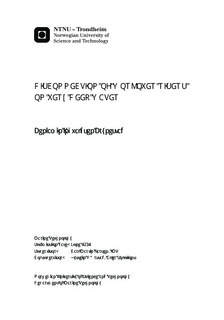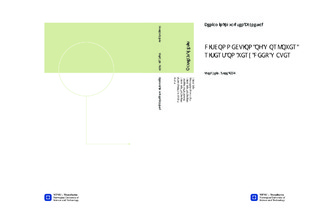| dc.contributor.advisor | Larsen, Carl Martin | nb_NO |
| dc.contributor.advisor | Wærstad, Øystein | nb_NO |
| dc.contributor.author | Brynestad, Benjamin Ingvaldsen | nb_NO |
| dc.date.accessioned | 2014-12-19T12:07:21Z | |
| dc.date.available | 2014-12-19T12:07:21Z | |
| dc.date.created | 2012-11-08 | nb_NO |
| dc.date.issued | 2012 | nb_NO |
| dc.identifier | 566062 | nb_NO |
| dc.identifier | ntnudaim:7734 | nb_NO |
| dc.identifier.uri | http://hdl.handle.net/11250/238160 | |
| dc.description.abstract | for advanced riser analysis. Deep water oil recovery have forced a change in thesystems used to tension risers, the traditional wire-pulley systems are replacedwith direct acting hydraulic-pneumatic systems. In order to design these systemsto obtain the desired operability, analysis tools including the heave compensationsystem is necessary. As a result a pipe in pipe RIFLEX model have been developed.In this masters thesis the pipe in pipe model will be used to investigate drive-offand weak link fracture. Both subjects investigated exposes the riser to large forces,and will push the model to its limits. Another part of the thesis is focused aroundbatch execution of analyses with the use of MATLAB.The focus of the drive-off study lies mainly in investigating the dynamic behaviourof a deep water riser (3000[m] water depth) compared to a shallow water riser(300[m] water depth). Results are presented for upstream and downstream driveoff scenarios. The maximum offset is 100[m] obtained during a 50[s] period. Driveoffscenarios include cases where the vessel remains at the 100[m] offset, and caseswhere the vessel returns to its original position.Drive-off simulations revealed large differences in dynamic behaviour of the deepwater versus the shallow water system. When observing the lower riser anglefor shallow water simulations, the angle were closely related to the vessel offsetposition. Deep water simulations showed a delay of almost one minute before thelower angle responded with a rotation in the vessels movement direction. Duringthe first minute an initial effect that caused the riser to rotate away from the vesselposition was observed. Current had a limiting effect on the lower angle whendriving upstream, and increased the angle for downstream drive-off. By includinga return motion the riser angle increased more rapidly to large values. Variation inreturn motion had little effect on the maximum amplitude. The results show thatit might be difficult to take advantage of the dynamic delay in the riser response.Bear in mind that offsets of only 100[m] was investigated, the picture might changefor simulations including larger vessel offset.Weak link fracture is of concern since it will release large amounts of stored energythat is potentially harmful for personnel and equipment. Establishing analysismethods for weak link fracture can help to better understand the dynamics ofthe problem. In the present work a suitable analysis model was selected and aparametric study on the effect of drag on response was performed.A weak link fracture was simulated with 460 tonnes over pull. Weak link fracturesis a highly complex problem since the high pressure content of the riser is releasedinto the water, causing a rocket effect. The presented results are only accountingfor potential energy stored as strain in the riser and heave compensation system.A parametric study of the tangential drag versus the maximum vertical amplitudeof the riser is presented. The results are meant to be used as a starting point inan investigation of measures to limit the weak link fracture response.The weak link simulations showed that large accelerations are involved during theweak link fracture, and therefore added mass and mass can be of importance tothe response. Due to the rapid movement after fracture, it was found that specialcare needs to be taken when selecting the time incrementation for the simulations. | nb_NO |
| dc.language | eng | nb_NO |
| dc.publisher | Institutt for marin teknikk | nb_NO |
| dc.subject | ntnudaim:7734 | no_NO |
| dc.subject | MTMART Marin teknikk | no_NO |
| dc.subject | Marin konstruksjonsteknikk | no_NO |
| dc.title | DISCONNECTION OF WORKOVER RISERS ON VERY DEEP WATER | nb_NO |
| dc.type | Master thesis | nb_NO |
| dc.source.pagenumber | 78 | nb_NO |
| dc.contributor.department | Norges teknisk-naturvitenskapelige universitet, Fakultet for ingeniørvitenskap og teknologi, Institutt for marin teknikk | nb_NO |

